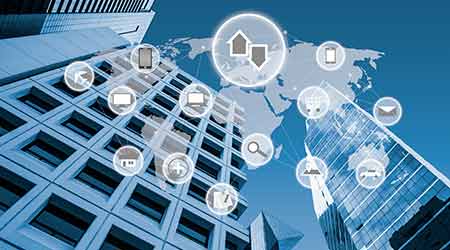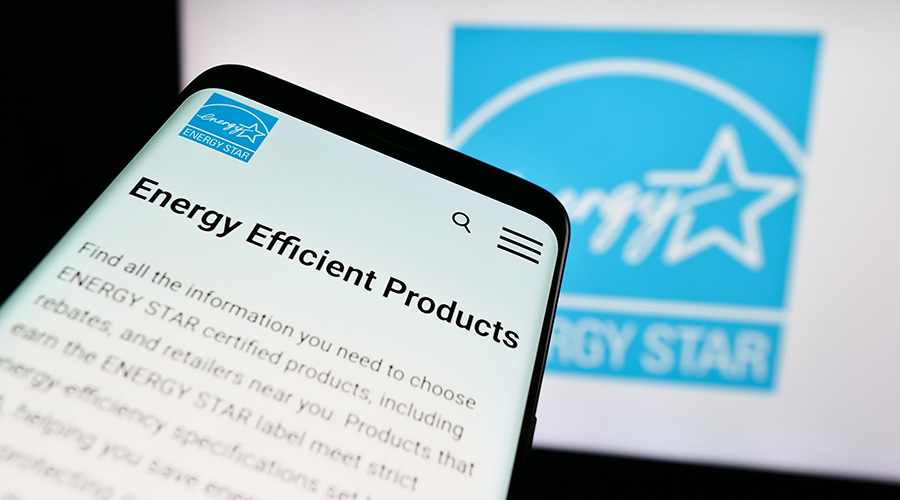Smart, Green Buildings: 3 Stages of Development
The Building Internet of Things will allow buildings to evolve from dumb and dirty to smart and sustainable.
A smart and sustainability revolution in the built environment is happening. Over the next decade, it will roll out in three stages:
Stage 1 — Offline buildings go online, so they can start getting smart.
Essentially, this involves moving our older, legacy buildings (the majority out there) into digital form, to be accessible by PCs, smartphones, and tablets from anywhere, any time. This may start by digitizing one or more of the basic critical systems: electrical, plumbing, HVAC, or low-voltage data.
Retrofitting is the name of the game here. We can’t just build new smart buildings and wait for them to replace the old dumb ones because the inventory of existing buildings dwarfs that of new construction. Climate change is happening too fast. We have no choice but to upgrade our existing commercial structures — 5.6 million in the United States alone, according to the U.S. Energy Information Administration.
Talking about smart organizations and smart cities may be in vain if most buildings remain offline. If buildings lack the means to share their data, how can they contribute to the larger intelligence required for mutual sustainability? If there isn’t a connected view of commercial building data from floor to floor, asset to asset, and mechanical to mechanical, there is no practical way to harness the offline information into a more predictive means of running these buildings.
Stage 2 — Once online, buildings link up with smart, cloud-based platforms.
This stage enables online buildings to wire their brains for self-improvement and predictive management in the future. Leveraging a cloud-based platform is a very big deal. It opens facilities to the fast-evolving world of automation and artificial intelligence, including the Building Internet of Things (B-IoT).
There are many cloud-based building management options. More than a dozen major building automation suppliers offer complementary and overlapping services. And they’re evolving. What they can do for you today may be greatly expanded tomorrow — based on advances in AI, the internet, cloud and edge networks, robotics, and transaction systems using the blockchain or directed acyclic graph (DAG).
One thing is fairly certain, though. The sooner a building is able to use a smart building automation system, the better. As with stage 1, the dollar benefits may significantly exceed the cost.
Building management systems go by many names: integrated building management systems (IBMS), building automation systems (BAS), computerized maintenance management systems (CMMS), facility management systems (FMS) and others. Cloud-based IoT platforms, from the largest tech companies, also offer AI-enabled building management features along with related services for transportation, healthcare, and other functions.
In selecting a building automation product, you might also ask for a recommendation from the company that provides your paper-to-online conversion.
Once you’ve implemented your chosen building automation service, it’s time to get serious about using it profitably — adding Building IoT sensors and smart devices in the third stage.
Stage 3 — Cloud-managed buildings evolve into “genius” buildings.
This stage happens in many small steps made possible by fast-evolving smart elements of the Building IoT.
As with building automation systems, there are many options and unknowns in the AI-enabled IoT scene.
According to IOT Analytics, in 2019 the global number of connected IoT devices is 8 billion, about one for every person on earth. By 2025, the number is expected to approach 22 billion, nearly 3 per person. By 2030, there may be 10 per person, or 100.
In time, just about anything in a building might become a Building IoT device: window, water pipe, faucet, door lock, fan, coffee maker, and more. And each may be a new source of efficiency or serviceability.
Smarter objects may be invented constantly thanks to evolving IoT. For example, today’s smoke detectors may be superseded by sophisticated fire predictors that find and fix causes before smoke or flame develops.
Human tragedies may be prevented by people detectors that identify intruders before they do harm.
Objects of all types are gaining intelligence and connectivity. Get comfortable with planning for these devices even before they’re available.
With thousands of IoT options emerging, how can you set priorities?
In stage 3, as in stages 1 and 2, thinking about both sustainability and financials is key. These criteria may be used for any Building IoT purchase or action. Is it good for the environment but bad for the bottom line? Nix it. Does it save money but neglect the environment? Nix it. Keep looking for an option that’s good for both.
Green-green decisions are vital for two reasons. First, if it’s bad for the environment, it will eventually be bad for the bottom line also — because an unsustainable world can’t sustain business. Second, if it’s bad for the bottom line but good for the environment, there’s probably a way for it to be good for both if you’re creative enough. Keep looking.
Smeenk sees three areas of green-green opportunity in stage 3. They’re strategies for not only saving money but making money in whole new ways.
“One area for new revenue generating opportunities will be applications for improving the quality of experience for building tenants or visitors,” he says. “Knowing the users’ preferences for temperature, lighting, air quality, sounds etc., will drive development of personal ergonomics-focused apps and microservices.”
The second area will open up after high-speed 5G networking becomes commonplace. “Edge data centers placed inside buildings will drive an industry around private networks with specialty content and computing moved closer to the end user,” he says. “Think VR type applications, customized closets, automated food preparation, entertainment systems, and many others.”
The third area will materialize along with advances in artificial intelligence. “AI and data analytics will drive new services around prediction, automation, and customization that will also continue to drive cost reductions,” he says. “Robots and drones moving about the building will speed delivery of food from the cafeteria, dry cleaning, packages, and more.”
To help the process along, Smeenk proposes a new standard like the LEED standard that is helping advance green building. It would be a smart building certification system with levels from smart to genius, to help accelerate solutions and spread best practices.
Exciting times lie ahead. Buildings are changing as never before. How that turns out depends upon the day-to-day decisions of each person running a building.
Dick Samson is director of EraNova Institute
Related Topics:













